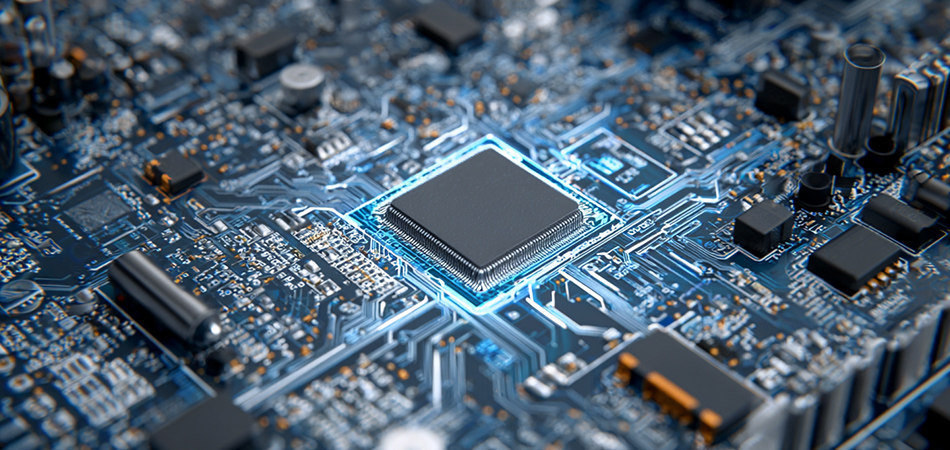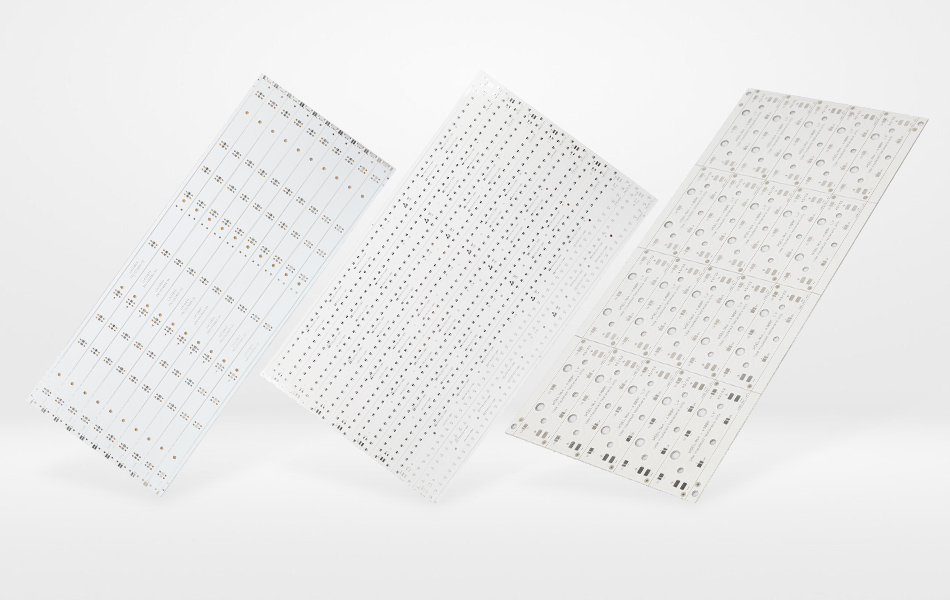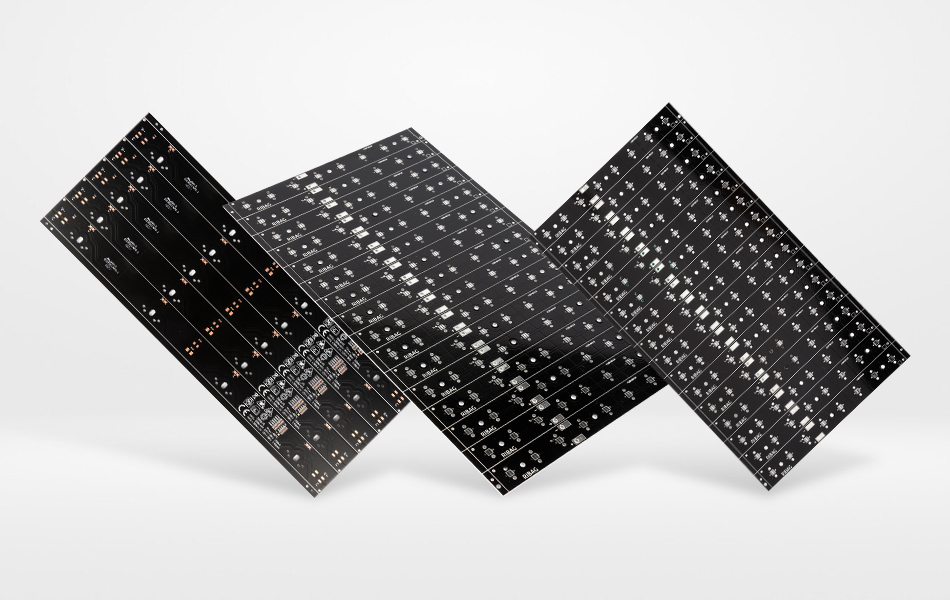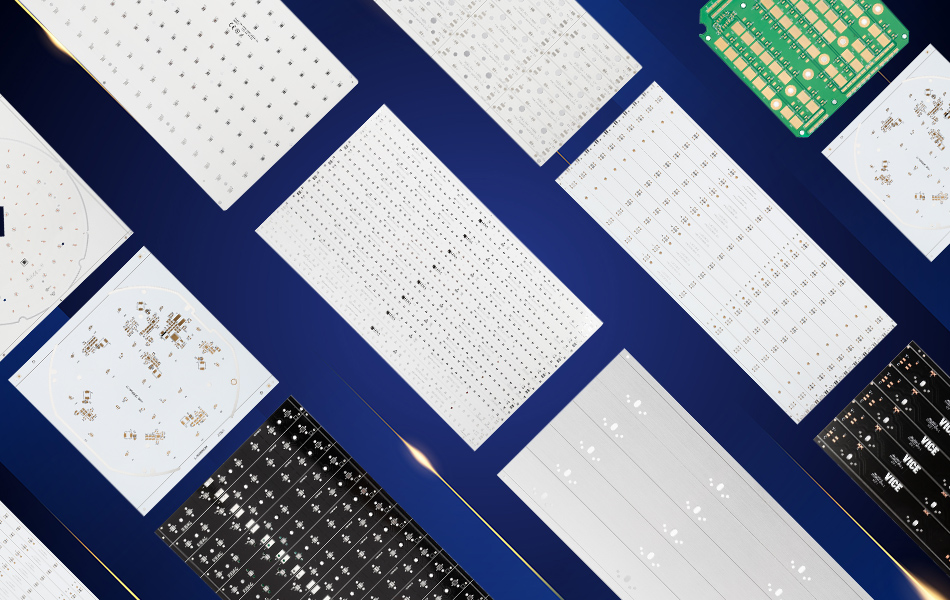-
- PCB TYPE
- PRINTED CIRCUIT BOARD PROTOTYPE ALUMINUM PRINTED CIRCUIT BOARD R&F PCB FPC HIGH FREQUENCY PCB HIGH-TG PCB HEAVY COPPER PCB HDI PCB PCB FOR LIGHTING METAL CORE PCB
time:Jul 01. 2025, 15:18:06
Introduction: The Crucial Role of Aluminum PCB Manufacturers
In the ever-evolving electronics industry, aluminum PCB manufacturers play a pivotal role in addressing one of the most critical challenges: thermal management. As electronic devices continue to grow in power density while shrinking in size, the demand for efficient heat dissipation solutions has never been higher. Aluminum printed circuit boards (PCBs) have emerged as the go-to solution, and the manufacturers behind these boards are at the forefront of technological innovation, material science, and manufacturing excellence. This article delves into the world of aluminum PCB manufacturers, exploring their technical capabilities, manufacturing processes, industry applications, and the key factors that set them apart in a competitive global market.

The Technical Foundations of Aluminum PCB Manufacturing
Thermal Management Design Principles
Aluminum PCB manufacturers excel in thermal management design, employing principles that ensure efficient heat dissipation:
Thermal Path Optimization: Designing low-resistance thermal paths from heat-generating components to the aluminum substrate, minimizing thermal gradients and hotspots.
Thermal Vias: Strategic placement and design of thermal vias to facilitate vertical heat transfer. Manufacturers understand how via size, spacing, and filling materials impact thermal performance.
Heat Sink Integration: Knowledge of how to integrate aluminum PCBs with external heat sinks, including the selection and application of thermal interface materials (TIMs) to ensure optimal heat transfer.
Electrical and Mechanical Design Considerations
Electrical Design: Expertise in trace width calculation, ground plane optimization, and voltage clearance to ensure reliable electrical performance without compromising thermal management.
Mechanical Design: Understanding of mechanical stresses, vibration resistance, and thermal expansion matching to create robust PCBs that withstand the rigors of various applications.

Manufacturing Processes: Where Precision Meets Scale
Material Preparation and Lamination
Aluminum Substrate Pretreatment: Manufacturers employ precise cleaning and surface activation techniques to ensure optimal adhesion of dielectric layers. This may involve degreasing, alkaline etching, or plasma treatment.
Lamination Processes: State-of-the-art vacuum laminators are used to bond copper foils, dielectric layers, and aluminum substrates under controlled heat and pressure. This process ensures void-free bonding and uniform thickness, critical for consistent thermal and electrical performance.
Circuit Patterning and Via Formation
Photolithography: Advanced imaging techniques, such as laser direct imaging (LDI), enable high-resolution trace definition. Manufacturers use eco-friendly etching solutions to form precise copper circuitry.
Precision Drilling: Diamond-coated drill bits and advanced cooling systems are employed for accurate via formation in aluminum substrates, minimizing burrs and tool wear.
Via Plating and Filling: Electroless copper plating is used to ensure electrical connectivity through vias, while thermal conductive materials may be used to fill vias and enhance heat transfer.
Surface Finishing and Quality Assurance
Lead-Free Surface Finishes: Manufacturers implement environmentally friendly finishes such as electroless nickel immersion gold (ENIG), organic solderability preservatives (OSP), or tin-based alloys to ensure solderability and corrosion resistance.
Comprehensive Testing: Rigorous testing protocols, including thermal resistance testing, electrical testing, and environmental stress testing, ensure that PCBs meet performance and reliability standards.

Quality Management in Aluminum PCB Manufacturing
Certification and Compliance
ISO Standards: Many leading manufacturers hold ISO 9001 certification for quality management and ISO 14001 for environmental management, demonstrating a commitment to consistent quality and sustainable practices.
Industry-Specific Compliance: Compliance with standards such as IPC (Institute for Printed Circuits) and UL (Underwriters Laboratories) ensures that PCBs meet safety and performance requirements for various applications.
RoHS and REACH Compliance: Manufacturers prioritize the use of materials free from hazardous substances, adhering to global environmental regulations.
Quality Control Processes
In-Process Inspections: Manufacturers employ a combination of visual inspection by trained operators and automated optical inspection (AOI) systems to detect defects at various stages of production.
Statistical Process Control (SPC): Implementation of SPC techniques allows for real-time monitoring of production variables, enabling quick identification and correction of deviations.
Traceability Systems: Robust traceability systems ensure that every component and process can be tracked, from raw material sourcing to final product shipment, enabling quality verification and recall management if necessary.

Key Applications of Aluminum PCBs
LED Lighting
Aluminum PCB manufacturers serve a wide range of LED lighting applications:
High-Power LED Lighting: PCBs for streetlights, area lighting, and industrial lighting, where efficient thermal management is crucial for maintaining light output and extending lifespan.
Architectural and Landscape Lighting: Customized PCBs for complex lighting designs in commercial and residential projects, supporting creative lighting solutions.
Automotive Lighting: Robust PCBs for vehicle headlights, taillights, and interior lighting, designed to withstand vibration and temperature fluctuations.
Power Electronics
Power Supplies: PCBs for high-efficiency power supply units, ensuring reliable operation and heat dissipation.
Motor Control Systems: PCBs for industrial motor drivers and controllers, managing heat generated by high-power components.
Renewable Energy Systems: PCBs for solar inverters, wind turbine control systems, and energy storage solutions, contributing to the growth of clean energy.
Consumer Electronics
Portable Devices: Thin and lightweight PCBs for smartphones, tablets, and wearable devices, enabling sleek designs and reliable performance.
Home Appliances: PCBs for energy-efficient smart home devices, including thermostats, kitchen appliances, and security systems.
Audio Equipment: PCBs for audio amplifiers and speakers, reducing thermal stress on components to maintain high-quality sound output.
Medical and Healthcare Devices
Diagnostic Equipment: PCBs for medical imaging and diagnostic systems, requiring precision and reliability.
Surgical Instruments: PCBs for surgical lighting and precision medical tools, designed for sterility and consistent performance.
Wearable Medical Monitors: Compact and reliable PCBs for continuous health monitoring devices.
Aerospace and Defense
Avionics Systems: High-reliability PCBs for aircraft navigation and communication systems, meeting strict aerospace standards.
Military Electronics: Ruggedized PCBs for use in harsh environments, including extreme temperatures, vibrations, and electromagnetic interference.
Satellite Technology: PCBs with low-outgassing materials for space applications, ensuring reliability in the vacuum of space.

The Competitive Landscape of Aluminum PCB Manufacturing
Regional Manufacturing Hubs
Asia-Pacific: Dominant in global aluminum PCB production, with key manufacturing centers in China, Taiwan, and South Korea. These regions benefit from scale, integrated supply chains, and significant R&D investments.
North America and Europe: Focused on high-end, specialized aluminum PCBs for aerospace, defense, and medical applications, leveraging advanced technology and engineering expertise.
Southeast Asia: Emerging as a manufacturing hub for cost-effective aluminum PCBs, attracting global brands seeking to balance quality and affordability.
Key Competitive Factors
Technological Innovation: Manufacturers that invest in R&D and adopt advanced technologies, such as nano-materials and 3D printing, gain a competitive edge.
Quality and Reliability: A proven track record of high-quality products and reliable performance is essential for attracting clients in demanding industries.
Cost Efficiency: Efficient manufacturing processes and economies of scale allow manufacturers to offer competitive pricing without compromising quality.
Customization Capability: The ability to provide tailored solutions for unique customer requirements sets manufacturers apart in a diverse market.
Sustainability Practices: Commitment to environmental sustainability, including the use of recycled materials and energy-efficient processes, is increasingly important to clients.
Technological Trends in Aluminum PCB Manufacturing
Advanced Material Innovations
Nano-Enhanced Dielectrics: Development of dielectric materials incorporating nano-scale fillers like graphene or boron nitride to significantly improve thermal conductivity.
Biodegradable and Recyclable Materials: Research into eco-friendly dielectrics and recycled aluminum substrates to reduce the environmental impact of PCB manufacturing.
Metal Matrix Composites: Integration of aluminum with ceramic fillers to create substrates with tailored thermal and mechanical properties for specific applications.
Manufacturing Process Advancements
Additive Manufacturing (3D Printing): Adoption of 3D printing for rapid prototyping and customized aluminum PCB designs, enabling complex geometries and integrated heat sink structures.
Laser-Based Fabrication: Precision laser drilling and etching for microvias and fine-line traces in high-density PCBs, improving thermal performance and component integration.
Automation and AI Integration: Implementation of robotic automation and artificial intelligence in manufacturing processes for improved precision, efficiency, and quality control.
Integration with Emerging Technologies
5G and IoT: Development of aluminum PCBs for high-frequency applications in 5G infrastructure and IoT devices, requiring advanced thermal management and signal integrity.
Electric Vehicles (EVs): Specialized PCBs for EV battery management systems, power inverters, and charging infrastructure, supporting the growth of electric mobility.
Artificial Intelligence (AI) and Edge Computing: High-performance PCBs for AI accelerators and edge computing devices, designed to manage heat generated by powerful processors.
Challenges and Opportunities in Aluminum PCB Manufacturing
Key Challenges
Rising Material and Labor Costs: Increasing costs of raw materials and labor, particularly in established manufacturing hubs, pressure manufacturers to seek cost-saving innovations.
Technological Complexity: The need to keep pace with rapid technological advancements in electronics, requiring continuous investment in R&D and skilled labor.
Environmental Regulations: Stricter environmental standards globally, pushing manufacturers to adopt greener practices and materials.
Global Supply Chain Disruptions: Vulnerabilities in global supply chains, highlighted by events like the COVID-19 pandemic, necessitating greater supply chain resilience.
Emerging Opportunities
Growth in Renewable Energy and EVs: Increasing demand for aluminum PCBs in renewable energy systems and electric vehicles presents significant growth opportunities.
Advancements in Miniaturization: The trend toward smaller, more powerful electronic devices creates demand for high-density aluminum PCBs with advanced thermal management.
5G and IoT Expansion: The rollout of 5G networks and the proliferation of IoT devices drive demand for specialized aluminum PCBs.
Sustainability-Driven Innovation: Opportunities to develop eco-friendly aluminum PCBs and manufacturing processes, aligning with global sustainability goals.
Choosing the Right Aluminum PCB Manufacturer
Key Selection Criteria
Technical Capability: Evaluate the manufacturer's expertise in designing and producing aluminum PCBs for specific applications, including thermal management design and manufacturing processes.
Quality Assurance: Review the manufacturer's quality management systems, certifications, and testing capabilities to ensure product reliability.
Scalability: Assess the manufacturer's ability to scale production from prototyping to mass production, meeting volume and lead time requirements.
Cost-Effectiveness: Balance between price and quality, considering the total cost of ownership rather than just the initial purchase price.
Customer Support: Evaluate the manufacturer's post-sales support, including technical assistance and feedback management.
Sustainability Practices: Consider the manufacturer's commitment to environmental sustainability, including material sourcing and manufacturing processes.
Risk Management in Supplier Selection
Diversification: Consider working with multiple manufacturers to mitigate supply chain risks.
Audits and Assessments: Conduct on-site audits or request detailed assessments of the manufacturer's facilities, processes, and quality systems.
Sample Testing: Request and thoroughly test samples before committing to large-scale orders to ensure they meet performance requirements.
Long-Term Partnerships: Foster long-term relationships with manufacturers to ensure consistent quality and better collaboration on new projects.
Conclusion: The Future of Aluminum PCB Manufacturing
Aluminum PCB manufacturers play a vital role in enabling the next generation of electronic devices by addressing the critical challenge of thermal management. As technology continues to advance, these manufacturers will need to stay at the forefront of material science, manufacturing innovation, and sustainability practices. The demand for aluminum PCBs is set to grow across various industries, driven by trends such as the adoption of renewable energy, the expansion of 5G and IoT, and the rise of electric vehicles.
Manufacturers that invest in R&D, embrace advanced technologies, and prioritize quality and sustainability will be well-positioned to lead in this dynamic landscape. For businesses relying on high-performance electronic devices, choosing the right aluminum PCB manufacturer is crucial to ensuring product reliability, performance, and competitiveness in the market. The future of aluminum PCB manufacturing is bright, with endless opportunities to innovate and contribute to the advancement of technology across multiple sectors.

Got project ready to assembly? Contact us: info@apollopcb.com



We're not around but we still want to hear from you! Leave us a note:

Leave Message to APOLLOPCB
